The Latin meaning for arborvitae is “tree of life.” There is no term more apt for this stunning tree which stands tall and imposing like a steadfast sentry. However, the juniper is another tree with an incredibly similar appearance, albeit not quite as tall. Both arborvitae and juniper are evergreen trees and shrubs which are well known for their needle-like leaves. Yet, despite their appearance, they are actually two very different species. So join us as we discover everything you need to know about arborvitae vs juniper!
Comparing Juniper vs Arborvitae
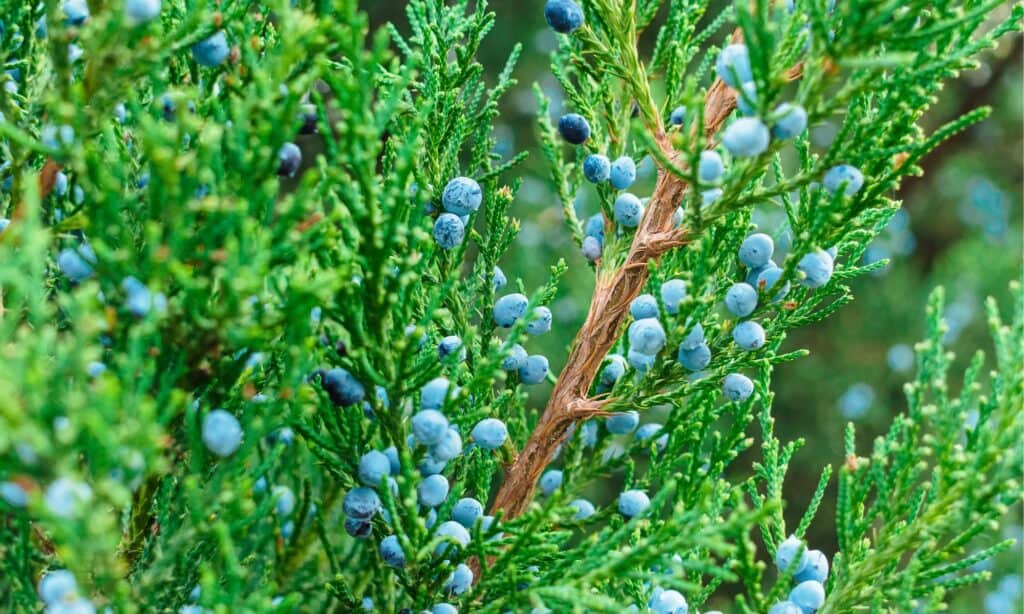
Junipers are evergreen trees and shrubs known for their needle-like leaves.
©iStock.com/Yuliya Shauerman
| Juniper | Arborvitae | |
| Genus | Juniperus | Thuja |
| Origin | Widely distributed through Northern Hemisphere | North America & eastern Asia |
| Size | Height – 4 inches to 50 feet Width – up to 20 feet | Height – 2 to 70 feet Width – up to 15 feet |
| Shape | Varied – pyramidal or conical | Upright and pyramidal |
| Cones | Male trees – small and yellow Female trees – berries which are modified cones | Small and cylindrical |
| Leaves | Small and stiff blue-green needles in clusters of three | Juvenile – long and needle-like Adult – small and scale-like |
| Berries | Only on female trees and typically blue | Red or brown |
| Cold Tolerance | Up to -10°C | Juveniles require protection from the cold |
The 5 Key Differences Between Arborvitae and Juniper
The main differences between arborvitae and juniper are the appearance and color of their cones and berries.
They also have different leaves, grow in different shapes, and are different sizes. Additionally, they have very different origins and are classified differently.
Arborvitae vs Juniper: Classification
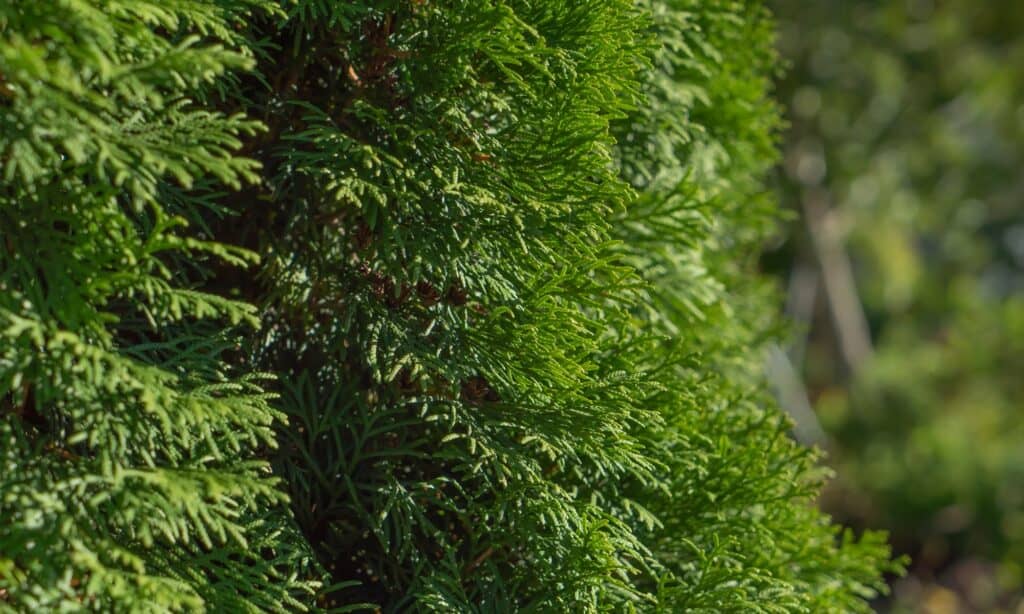
Green Giant Arborvitaes work well in most backyard landscaping.
©iStock.com/IgorTsarev
Junipers are any species in the Juniperus genus, which is comprised of approximately 50 to 67 different species. Juniperus is a member of the Cupressaceae family group, known as the cypress family.
Arborvitae is also a member of the Cupressaceae family group. However, they are members of the genus Thuja. There are only five species in Thuja – all of which can be called arborvitae.
Arborvitae vs Juniper: Origin
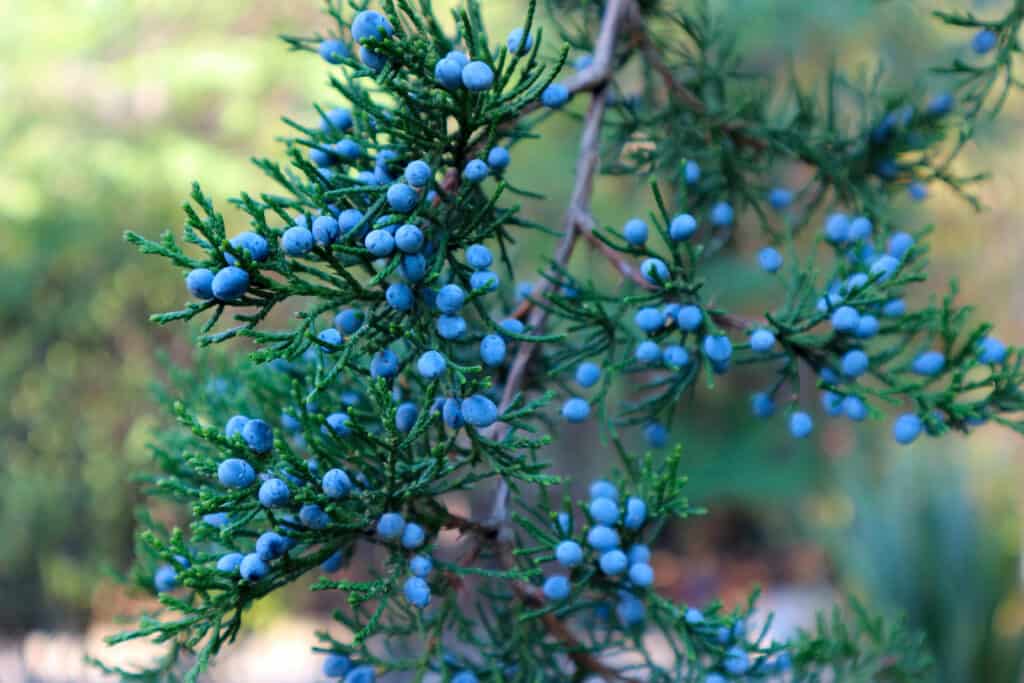
Junipers are typically found in mixed or coniferous forests.
©iStock.com/Lyudmila Chetvertnykh
One of the main differences between arborvitae and juniper is where they come from. Junipers are widely distributed across the Northern Hemisphere and have one of the largest ranges of any plant in the world. They are native to the Arctic, Africa, Asia, and North America. Junipers are typically found in mixed or coniferous forests. They prefer dry to moist soil and tend to tolerate drier soil than arborvitae. The highest elevation of junipers found was 16,100 feet in a forest in Tibet, which is one of the highest tree lines in the world.
Arborvitae are native to North America and Asia. Two of their five species are found in North America, while the other three are native to Asia. Arborvitae are typically found in coniferous forests and tend to be able to tolerate boggier soil than junipers.
Arborvitae vs Juniper: Cold Tolerance
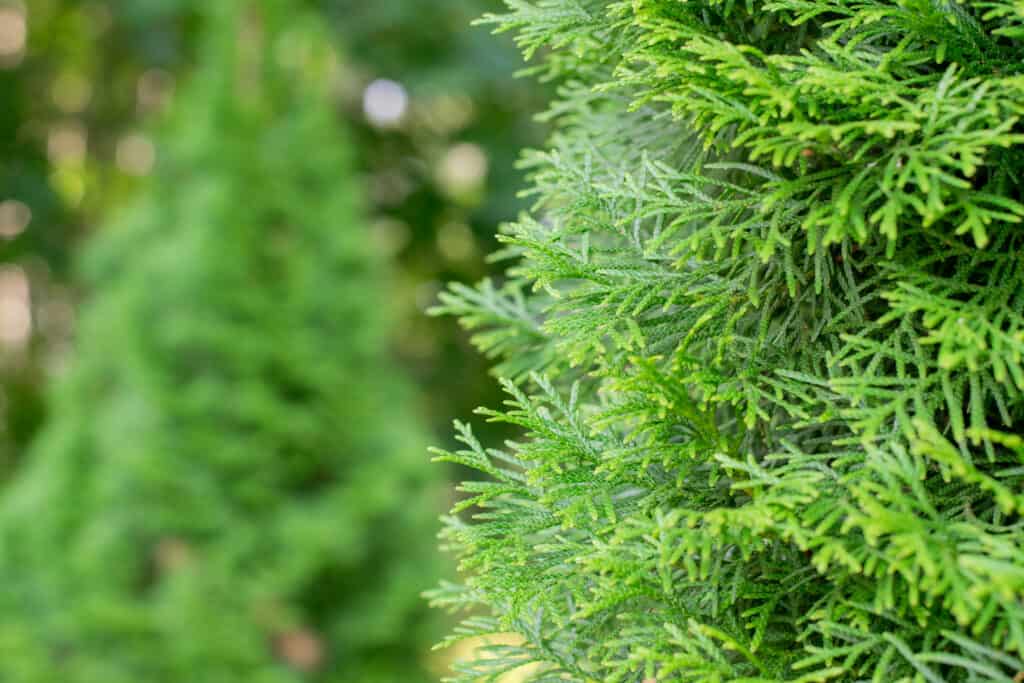
Although hardy, arborvitae are not as tolerant of the cold as junipers and can become damaged by extreme weather conditions
©iStock.com/Oksana Chaun
Another major difference between arborvitae and junipers is their tolerance of the cold. Junipers are particularly hardy and can withstand the cold well until it reaches approximately -10°C. After this, they risk dehydration as their roots can become frozen. Although hardy, arborvitae are not as tolerant of the cold as junipers and can become damaged by extreme weather conditions. However, juvenile trees and shrubs of both types can sometimes require protection from the cold during winter.
Arborvitae vs Juniper: Leaves
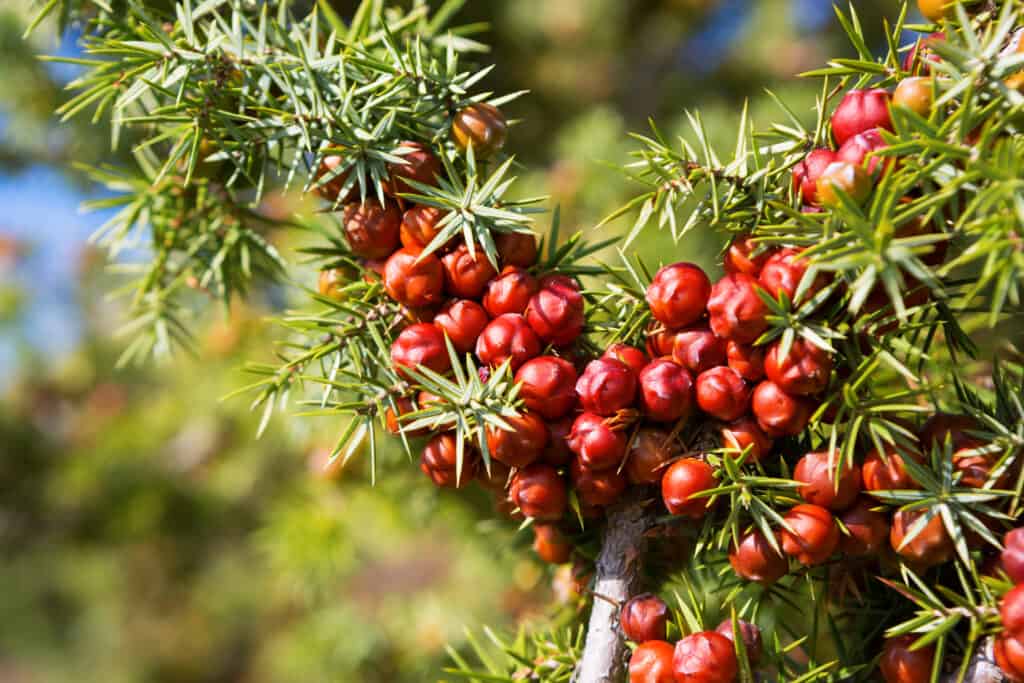
The male and female cones on junipers develop on separate trees, and only the female trees develop berries.
©iStock.com/Antonel
Although both trees are known for their needle-like leaves, they are not quite the same. Junipers have small, stiff, needle-like leaves that appear bluish-green and grow in clusters or whorls of three. Arborvitae have needle-like leaves as juveniles up to around one year of age, after which they mature into scale-like leaves. These typically have a flattened appearance and are soft to the touch rather than spiky or prickly. It is believed that their leaves are needle-like as juveniles to deter animals from eating them, which could compromise the tree’s growth.
Arborvitae vs Juniper: Cones & Berries
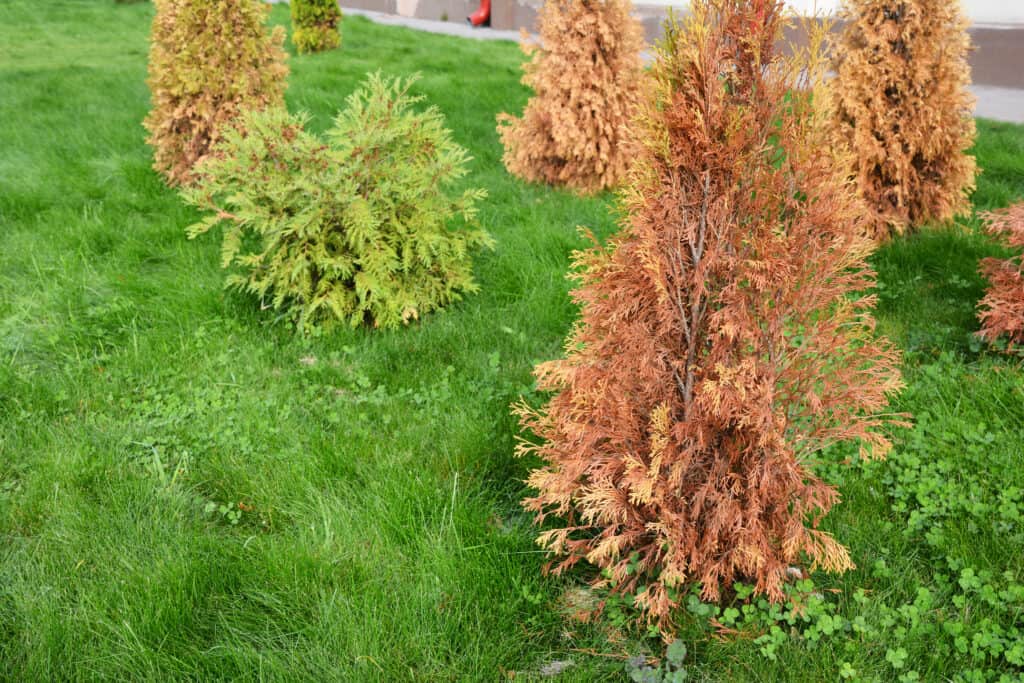
Arborvitae develops male and female cones on the same tree; in both cases, they are cylindrical-shaped.
©iStock.com/Lex20
The final difference between arborvitae and junipers is the appearance of their cones and berries. Arborvitae develops male and female cones on the same tree; in both cases, they are cylindrical-shaped. The male cones are small and grow at the ends of the branches. Although also small, the female cones are slightly larger than the male cones and grow part way along the branches. Arborvitae develops small white flowers, turning into small red or brown berries.
The male and female cones on junipers develop on separate trees, and only the female trees develop berries. The male cones are small and yellowish. However, the female cones are not typical cones. Instead, they are modified cones that develop into a berry-like appearance. Therefore, they are not true berries even though they look like them. The juniper “berries” are typically blue and fleshy.
Bonus: Emerald Green Arborvitae Make Perfect Privacy Screens

Mature emerald green arborvitae in planters can be purchased at nurseries.
©Bruce Peter/Shutterstock.com
Many people prefer the look of a line of lovely, evergreen trees to mark property lines and provide privacy to tall fences – making arborvitae a perfect choice for these purposes. Emerald-green arborvitae are fast-growing trees that can stand up to drought, insects, and extreme temperatures while providing an element of beauty to your landscape. Once established, they keep their shape and color year-round.
These hardy evergreens grow one or two feet per year until established and then grow up to nine inches per year after that. Eventually, they will reach a height of around 15 feet and four feet wide. They can be planted from saplings or more mature, shaped trees can be planted if you need privacy in a hurry. Plant in the fall in a sunny, well-drained location. These beautiful trees do well in Hardiness Zones 2 – 8 and perform well in colder regions.
The photo featured at the top of this post is ©
Sources
- Home Nursery Inc., Available here: https://www.homenursery.com/Blog-Post/Upright-Junipers-Vs-Arborvitae-Reviews
- Plant Grower Report, Available here: https://www.plantgrowerreport.com/juniper-vs-arborvitae/
FAQs (Frequently Asked Questions)
Are junipers and arborvitae poisonous?
Both trees have the potential to be dangerous and can be toxic if consumed in large enough quantities. The pollen from juniper and arborvitae is known to cause skin irritation and contact dermatitis. Also, although arborvitae was frequently used for medicinal purposes during the 19th century to tree ailments such as warts, it can cause skin and eye irritation as well as breathing problems.
Do arborvitae and juniper make good shrubs?
Yes, both are popular as shrubs and bushes and are a good addition to most gardens.
Are arborvitae and juniper easy to grow?
Yes, both plants are easy to grow and require little maintenance.
Are junipers and arborvitae slow-growing?
Yes, both are slow-growing trees and grow less than one foot per year. In fact, in some cases it can take up to 100 years for these stunning giants to reach their full adult height. These trees are extremely long-living and their lifespan can sometimes even exceed 200 years!
Thank you for reading! Have some feedback for us? Contact the AZ Animals editorial team.






